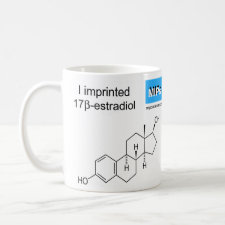
Authors: Saifuddin N, Nur YAA, Abdullah SF
Article Title: Microwave enhanced synthesis of chitosan-graft-polyacrylamide molecular imprinting polymer for selective removal of 17β-estradiol at trace concentration.
Publication date: 2011
Journal: Asian Journal of Biochemistry
Volume: 6
Issue: (1)
Page numbers: 38-54.
DOI: 10.3923/ajb.2011.38.54
Alternative URL: http://scialert.net/abstract/?doi=ajb.2011.38.54
Abstract: Polymers have been molecularly imprinted for the purpose of binding specifically to 17β-estradiol. A molecularly imprinted polymer (MIP) material was prepared using 17β-estradiol as the imprinted molecule, acrylamide as functional monomer and macroporous chitosan beads as functional matrix. Chitosan-graft-polyacrylamide was synthesized without any radical initiator or catalyst using microwave (MW) irradiation, which allowed MIP production in about 1 h compared to conventional method which requires 8-10 h. The representative microwave synthesized graft copolymer was characterized by Fourier transform-infrared spectroscopy, taking chitosan as a reference. The parameters studied included MIP synthesis optimization, using microwave, adsorption kinetics, adsorption isotherm, selectivity and reusability. Batch as well as column flow studies were performed. Removal experiments in batch were carried out by applying the chitosan-graft-polyacrylamide Molecular Imprinting Polymer (MIP) to various 17β-estradiol aqueous solutions. The chitosan coated polyacrylamide MIP was more rigid with better stability and enhanced adsorption capacity. The maximum adsorption capacity was observed to be 5.01 mg g-1 of MIP, which gave removal efficiency of above 91%. After 60 min, the change of adsorption capacities for 17β-estradiol did not show notable effects. The Langmuir and Freundlich adsorption models were also applied to describe the equilibrium isotherms. Equilibrium adsorption data showed that the adsorption of 17β-estradiol onto the MIP fitted well to the Langmuir equation. The MIPs were easily regenerated after each experiment with Methanol:Acetic acid (4:1 v/v) solvent and reused. © 2011 Academic Journals Inc
Template and target information: 17β-estradiol
Author keywords: adsorbent, Freundlich isotherms, Langmuir isotherm, Micropollution, Wastewater



Join the Society for Molecular Imprinting

New items RSS feed
Sign-up for e-mail updates:
Choose between receiving an occasional newsletter or more frequent e-mail alerts.
Click here to go to the sign-up page.
Is your name elemental or peptidic? Enter your name and find out by clicking either of the buttons below!
Other products you may like:
 MIPdatabase
MIPdatabase









